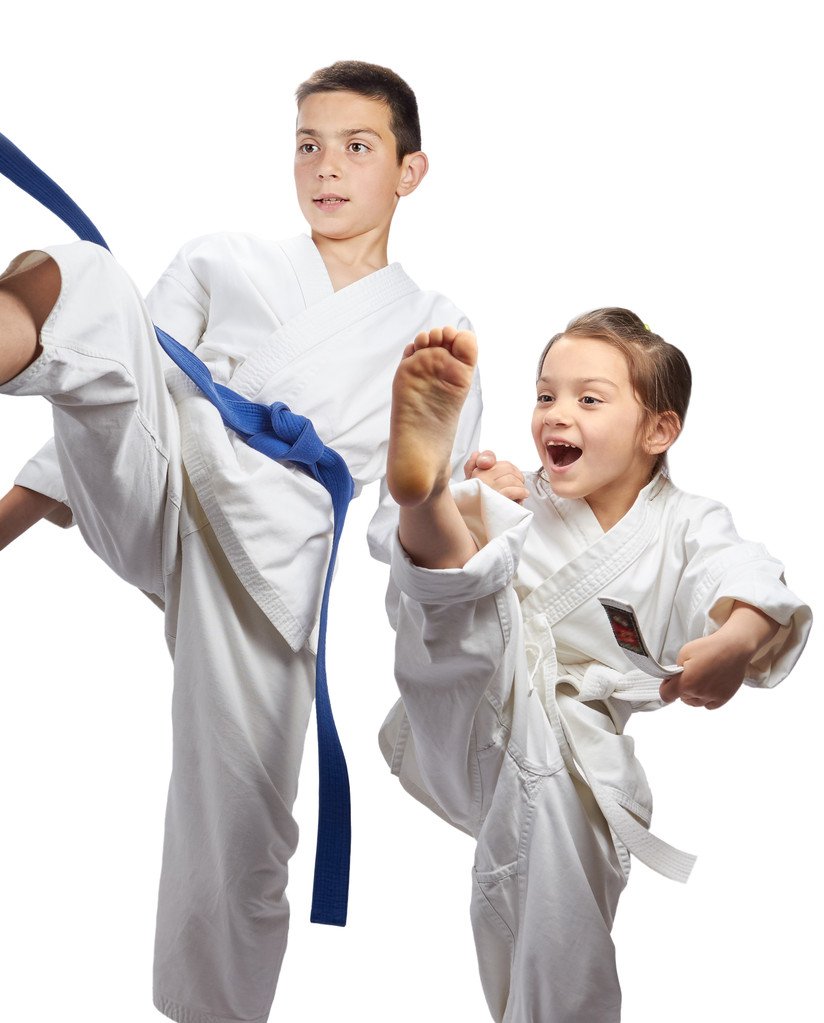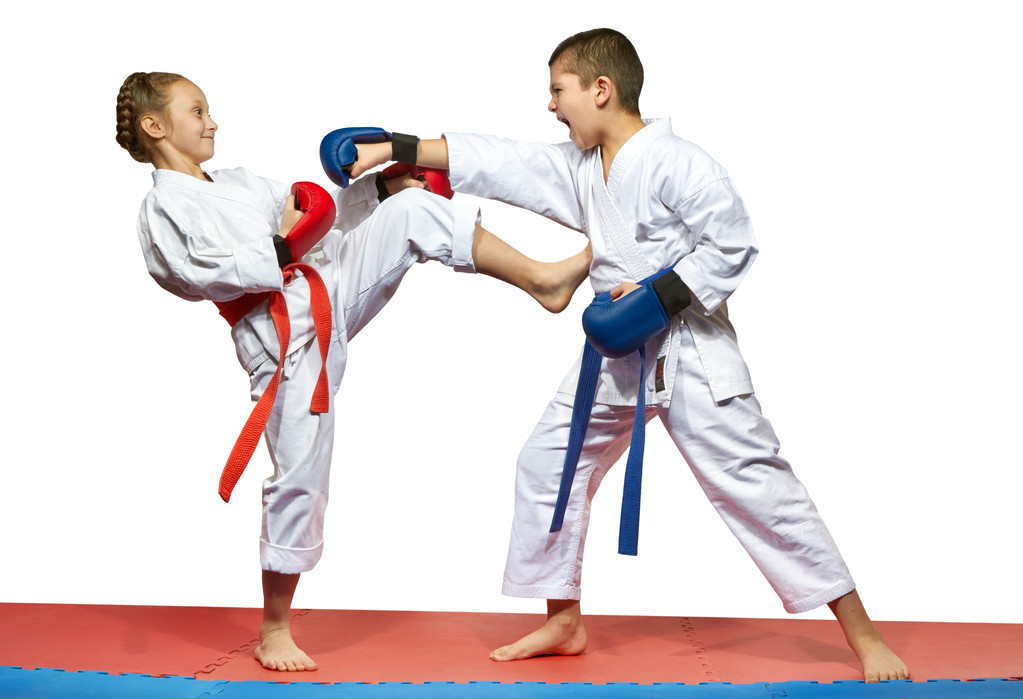Discover how to effectively teach self-defense techniques to 7-8 year old children with this comprehensive step-by-step guide.
Teaching Self-Defense to 7-8 Year Old Children: A Step-by-Step Guide
Oh, the joys of teaching self-defense to 7-8 year old children! It’s not just about throwing punches and kicks, but also about empowering these young warriors with important life skills. In this step-by-step guide, we’ll explore the importance of self-defense for children, how to prepare your child for training, basic self-defense techniques, incorporating self-defense into their daily routine, and ensuring safety during training. So, grab your sparring gear and let’s get started!

Understanding the Importance of Self-Defense for Children
First things first, let’s dive into why teaching self-defense to children is crucial. Self-defense is not only about physical safety but also about building confidence, resilience, and awareness. By equipping children with self-defense skills, we provide them with the tools necessary to protect themselves and make smart decisions when faced with potential danger.
When we talk about self-defense for children, it is essential to understand that it goes beyond just learning a few physical techniques. It encompasses a holistic approach that involves teaching children about personal boundaries, recognizing potentially unsafe situations, and developing assertiveness in responding to uncomfortable or threatening encounters.
Child safety is a top priority for parents, and self-defense plays a vital role in it. Teaching children basic self-defense techniques allows them to understand personal boundaries and recognize potentially unsafe situations. It instills a sense of empowerment and prepares them to respond assertively when faced with uncomfortable or threatening situations.
Imagine a scenario where a child is walking home from school and encounters a stranger who makes them feel uneasy. With self-defense training, the child would have the confidence and knowledge to assess the situation, create distance, and seek help if necessary. These skills not only provide physical protection but also empower children to trust their instincts and make informed decisions.
Moreover, self-defense is like a secret superpower that boosts a child’s self-confidence and self-esteem. By mastering physical techniques and learning to defend themselves, children gain a sense of empowerment and pride. This newfound confidence often translates into other areas of their lives, such as school, sports, and social interactions.
When children feel confident in their ability to protect themselves, they are more likely to assert themselves in various situations. This can lead to improved communication skills, better problem-solving abilities, and increased resilience in the face of challenges. Self-defense training helps children develop a strong sense of self-worth and belief in their capabilities.
Furthermore, self-defense training also enhances children’s awareness of their surroundings. They learn to observe and assess their environment, identifying potential risks and taking proactive measures to ensure their safety. This heightened awareness not only helps in self-defense situations but also in everyday life, as children become more attuned to their surroundings and potential dangers.
In conclusion, teaching self-defense to children is not just about physical safety. It is about empowering them with the skills and knowledge to protect themselves, build confidence, and develop resilience. By investing in their self-defense education, we equip children with invaluable tools that will benefit them throughout their lives.
Preparing Your Child for Self-Defense Training
Now that we understand the importance of self-defense for children, let’s focus on preparing your child for the training journey ahead.
Assessing Your Child’s Physical Capabilities
Each child is unique, and it’s essential to assess their physical capabilities before diving into self-defense training. Talk to your child’s pediatrician or seek guidance from a professional instructor to ensure their safety and tailor the training to their specific needs.
During this assessment, the pediatrician or instructor will evaluate factors such as your child’s strength, flexibility, coordination, and overall physical fitness. They will also consider any pre-existing medical conditions or injuries that may impact their ability to participate in certain self-defense techniques.
By taking the time to assess your child’s physical capabilities, you can ensure that they engage in self-defense training in a safe and effective manner. This personalized approach will help them build confidence and develop skills that are appropriate for their individual abilities.
Introducing the Concept of Self-Defense to Your Child
Before stepping into the dojo, it’s crucial to familiarize your child with the concept of self-defense. Start by having open conversations about personal safety, boundaries, and the importance of standing up for oneself.
One effective way to introduce the concept of self-defense is through age-appropriate books or videos that teach children about personal safety and empower them to protect themselves. These resources can help your child understand the importance of self-defense and provide them with practical strategies to stay safe in various situations.
Additionally, consider sharing stories of real-life heroes who have used self-defense techniques to protect themselves or others. These stories can inspire and motivate your child, showing them that self-defense is not only about physical strength but also about awareness, confidence, and quick thinking.
Furthermore, encourage your child to ask questions and express any concerns they may have about self-defense. By creating an open and supportive environment, you can address their fears and provide reassurance, ensuring that they feel comfortable and ready to embark on their self-defense journey.
Remember, the goal is to instill in your child a sense of empowerment and self-confidence, equipping them with the tools they need to navigate the world safely. By introducing the concept of self-defense in a thoughtful and age-appropriate manner, you lay the groundwork for their self-defense journey and set them up for success.
Basic Self-Defense Techniques for 7-8 Year Olds
It’s time to put those tiny fists to work! Here are some basic self-defense techniques that are perfect for 7-8 year olds.
Teaching the Right Stance and Movement
It all begins with a solid foundation. Help your child understand the importance of a balanced stance and how proper movement can enhance their speed and power. Encourage them to stay light on their feet and maintain a strong posture to create a presence that says, “Don’t mess with me!”
When teaching the right stance, explain to your child that they should stand with their feet shoulder-width apart. This will provide them with a stable base and make it harder for an attacker to knock them off balance. Emphasize the importance of keeping their knees slightly bent, as this will allow them to move quickly and maintain their balance.
Additionally, teach your child about the concept of center of gravity. Explain that by keeping their weight centered and evenly distributed, they will be able to react quickly and effectively to any situation. Encourage them to practice shifting their weight from one foot to the other, helping them develop agility and coordination.
Simple Strikes and Blocks for Young Children
Now, let’s introduce the little warriors to some simple strikes and blocks. Teach them basic punches, like the jab and straight punch, and essential blocks, such as the high and low block. These techniques will not only keep them safe but also make them feel like a martial arts superstar!
When teaching punches, emphasize the importance of proper form. Instruct your child to keep their wrists straight and their knuckles aligned with their forearm. Explain that by using the correct technique, they will be able to generate more power and minimize the risk of injury. Encourage them to practice their punches on a punching bag or a soft target, such as a foam pad, to develop strength and accuracy.
For blocks, demonstrate how to position their arms to protect their head, face, and body. Teach them to raise their arms to block high attacks and lower their arms to block low attacks. Encourage them to practice these blocks with a partner, taking turns attacking and defending, to develop their timing and reflexes.
Remember, self-defense is not just about physical techniques. It’s also about teaching children to be aware of their surroundings and trust their instincts. Encourage your child to pay attention to their environment, avoid dangerous situations, and seek help from a trusted adult if they feel threatened.
By teaching your child these basic self-defense techniques, you are empowering them to protect themselves and build confidence. However, it’s important to remind them that self-defense should only be used as a last resort when all other options have been exhausted. Encourage them to prioritize their safety and seek help whenever possible.
Incorporating Self-Defense into Daily Routine
Weave self-defense into your child’s daily routine to reinforce their skills and make it an exciting part of their lives.
Self-defense is not just about learning techniques; it’s about instilling confidence and empowering children to protect themselves. By incorporating self-defense into their daily routine, you can ensure that they are constantly practicing and refining their skills.
One way to make self-defense practice fun and engaging is by turning it into a game. Who said self-defense had to be all serious? Create obstacle courses where your child has to evade imaginary villains, jump over hurdles, and crawl under ropes. This not only helps them improve their agility and coordination but also makes the whole experience exciting and enjoyable.
Another idea is to assign your child secret missions that require them to implement their self-defense skills. For example, you can give them a mission to safely navigate through a crowded area without being spotted or to protect an object from imaginary thieves. This not only challenges their abilities but also encourages them to think strategically and use their self-defense techniques in real-life scenarios.
Remember, laughter and learning go hand in hand! Incorporate humor into their self-defense practice by creating funny scenarios or using playful language. This will not only make the practice sessions more enjoyable but also help them remember the techniques better.
Consistency is key when it comes to self-defense. Encourage your child to practice regularly, but in a way that doesn’t feel like a chore. Break down the techniques into bite-sized exercises that can be practiced during playtime or as part of their daily routine.
For example, you can incorporate self-defense moves into their warm-up routine before sports activities. Teach them simple strikes and blocks that they can practice while waiting for the school bus or during commercial breaks while watching TV. By integrating self-defense into their daily activities, you are not only reinforcing their skills but also making it a natural part of their lives.
Over time, this regular practice will help your child build muscle memory, allowing them to react instinctively in dangerous situations. It will also boost their confidence, knowing that they have the ability to protect themselves if the need arises.
Ensuring Safety During Self-Defense Training
While self-defense training is about empowerment, safety should always be a top priority. Here’s how to keep your little warriors injury-free.

Avoiding Injuries in Self-Defense Practice
Safety first, always! Start by ensuring that your child is wearing the appropriate protective gear during training. Shin guards, mouthguards, and headgear can help prevent injuries. Additionally, always supervise their practice sessions and encourage them to warm up and stretch before engaging in any physical activity.
Teaching Children the Ethical Use of Self-Defense
Alongside physical techniques, it’s crucial to teach children about the ethical use of self-defense. Emphasize the importance of only using their skills in situations where they feel genuinely threatened and to always prioritize de-escalation and seeking help from adults. Empower them to make wise decisions and remind them that their self-defense skills are not to be misused.
So, there you have it! A step-by-step guide to teaching self-defense to 7-8 year old children. Now, armed with knowledge and a playful approach, you can embark on this thrilling journey with your little warriors. Let’s empower them and watch their confidence soar as they become the ultimate protectors of their own safety!



